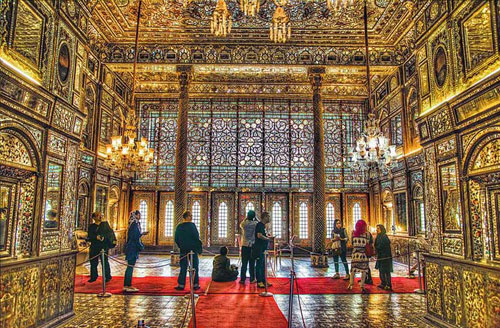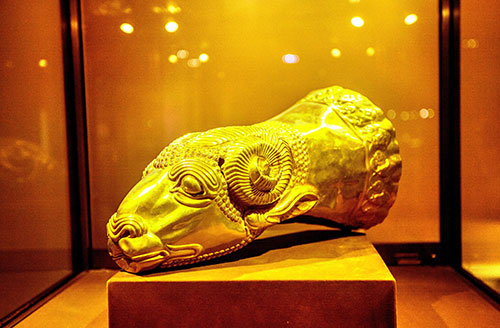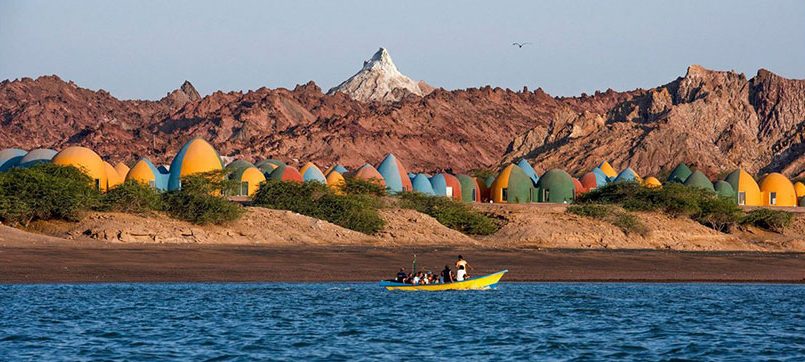Museum
A vast country like Iran with a long and ancient history and civilization is full of cultural sites and historical monuments. In Iran museums, one can find an extraordinary and unique collection of archeological artifacts. Although some Iranian historical artifacts are kept in the museums of other countries, in Iran you can see a handpicked collection of the most amazing items.
Here, we want to introduce to you some of the best museums in Tehran, the capital city of Iran. These museums contain historical, cultural and artistic exhibits.
Golestan Palace Museum

(aka Gulistan Palace) located downtown, in the middle of Tehran Bazaar. Golestan Palace is listed as one of UNESCO World Heritage Sites and is an ideal subject for photography thanks to its unique architecture and decorations. This monument was registered in the list of Iran’s National Monuments 1955 and in the list of UNESCO World Heritage Sites in 2013. Furthermore, many historical events have occurred in this palace which have made it a living document of Iranian history. This complex is located in old areas of Tehran and can easily be accessed via public transportation. There, you will be fascinated by Iranian art, architecture and history.
It should be noted that Golestan Palace is located in one of the most crowded parts of the city, so you need to allocate enough time to reach it. It is suggested that you make a comprehensive plan prior to visiting this museum, since Tehran Grand Bazaar, Tehran City Park (Park-e Shahr), Tir 30th (30 Tir) Street, National Museum of Iran and old neighborhoods of Tehran are all located in the vicinity. Thus, you can plan a one-day program for yourself to visit all these places. If you need further guidance, we would gladly be at you service here at PTS. You can read more information about this amazing complex in UNESCO Sites.
National Museum of Iran

Contains most of the archaeological artifacts discovered in scientific excavations from the Paleolithic to Islamic period. This museum complex is divided into two separate buildings, including the Museum of Ancient Iran and Islamic Art and Archeology Museum. The National Museum of Iran was established in 1937 as the first museum structure in Iran. It was designed by the French architect André Godard, inspired by Taq Kasra’s architecture, and architected by two Iranian architects, Abbas Ali Memar and Morad Tabrizi.
If you are interested in the history of ancient Iran, your first and best option is the National Museum of Iran or the Museum of Ancient Iran. Keep in mind that a thorough tour of the complex can take hours. It is also surrounded by the National Garden, the Malek Museum, the ministry of Foreign Affairs, the 4-star Ferdowsi Hotel and Tir 30th Street. As was mentioned with regard to Golestan Museum Palace, with a detailed plan, you can visit a large number of historical and cultural sites located in the middle of Tehran.
Reza Abbasi Museum

Reza Abbasi Museum owns one of the richest historical and cultural collections in the country and can be regarded as the smaller version of the Museum of Ancient Iran. The spectacular collection of this museum dates from the 2nd millennium BC to the early 20th century and the Qajar dynasty. There are about 50,000 objects in the museums, but, unfortunately, only 700 items can be displayed at a time. Other artifacts are exhibited from time to time in the Hall of Temporary Exhibitions.
If you do not have enough time or you want to take a brief tour of Iranian cultural sites and historical monuments, it is recommended that you visit Reza Abbasi Museum. The items in this collection were purchased by Farah Diba, the wife of the last king of Iran, from antique dealers who had smuggled them out of Iran, and were all put in this museum.
It should be noted that Reza Abbasi Museum has 3 floors, and that the tours start from the upper floor downwards. This museum has various halls including the Pre-Islamic Hall (3rd floor), Islamic Arts Halls No.1 & 2 (2nd floor), Persian Miniature (1st floor), Persian Calligraphy Hall (1st floor), the Hall of Temporary Exhibitions (ground floor).
Sa’adabad Historical Complex

Sa’adabad Historical Complex is one of the most important places in the contemporary history of Iran, where the last monarchs of Qajar and Pahlavi dynasties took residence. Visiting Sa’adabad Complex provides one with information on and insight into Iranian contemporary history.
Saadabad Complex is located in the north of Tehran. One of its entrances leads to Darband, which itself is amongst the most famous tourist attractions of Tehran. Darband hosts tourists and travelers with its numerous restaurants in the middle of mountain passages.
The green scenery and the cool and pleasant weather in this part of Tehran adds to the attractions of Sa’adabad Complex. The large number of museums in this complex may at first confuse tourists and visitors. However, we suggest that you do not miss the Green Palace, the Nation’s Palace (aka Mellat Palace or White Palace), and Omidvar Brothers’ Museum (the first Iranian world travelers).





